
I956 By the mid-fifties the Morris Minor was well established and proving to be profitable for BMC with work being done on its eventual replacement.
This car was to have front wheel drive and a transverse engine. Not only that, but its gearbox was intended to be mounted on the end of the engine (not in the sump) as has become the modern practice.
But fate intervened and essentially robbed BMC of pioneering this layout. Managing Director of BMC, Leonard Lord, had become alarmed at the proliferation of German bubble cars on British roads and decided BMC needed to produce a small car that would provide a "British" alternative.
This would turn out to be the Mini and as it was needed in a hurry, the basic design for it was merely a scaled down version of the Morris Minor replacement. The only problem was that the end-on gearbox was too wide for the smaller car so the gearbox was moved into the sump.
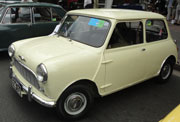
I959 Ironically, by the time the Mini was launched in 1959, the bubble car market had collapsed since petrol had become more freely available.
With the Mini established, work turned again to the Morris Minor replacement. For cost reasons, management decided that this car would now use the same power unit that had been developed for the Mini, but with a slightly larger capacity.
Development of the end-on gearbox configuration was abandoned by BMC and it was Fiat who independently introduced it, with a transverse engine, in the late 60s.
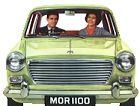
I962 By the time this car was released to the British public in 1962 (as the Morris 1100) the Morris Minor was still popular and profitable.
Since the two cars were radically different, BMC chose to continue the Minor to avoid losing the custom of conservative buyers.
This was not the case in Australia, the Minor having been already discontinued in 1961 to make way for the Mini.
Remarkably, the Morris Minor soldiered on in the UK for another decade until it was finally replaced by the rear wheel drive Marina in 1971.
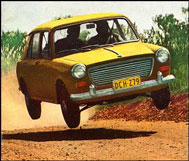
I963 BMC Australia evaluates the Morris 1100 for the Australian Market and is given free reign to modify the car to suit Australian Conditions. Nine English 1100s are imported and test-driven nearly 200,000 miles in the Outback with one car travelling more than 75,000 miles.
As a result many changes are made to meet conditions not encountered in England and many are incorporated into English cars produced for export. Changes include steering modifications to reduce noise and kickback, the overall gearing of the car was reduced to give more lively performance and more pull in top gear.
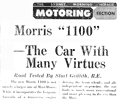
Australian production begins at the British Motor Corporation's factory at Zetland in New South Wales. Following the National Press Preview it was released to the public on Monday the 17th of February.
The Motoring press proclaimed it "The Car With Many Virtues".
An immediate success one fortnight after going on sale buyers face a six week waiting list as BMC struggles to keep up with demand. The most popular colours of white and green were still wait-listed 2 weeks at the end of the year despite BMC raising the price by £19 in August. With a total of 17,701 sales, it is second only to the Volkswagen (with 22,291 sales) for the year.
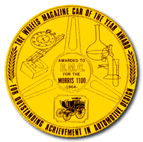 Wheels Magazine award BMC the 1964 Car of the Year for the 1100.
Wheels Magazine award BMC the 1964 Car of the Year for the 1100.This award is recognises excellence and innovation in design, fulfillment of intended purpose and performance amongst its many criteria.
By the end of May the Morris 1100 is outselling all its rivals except the Volkswagen 1200 beetle and clocks up its best year with 20,378 sales - no doubt helped by all the publicity, and actually eclipsing VW by the end of the year.
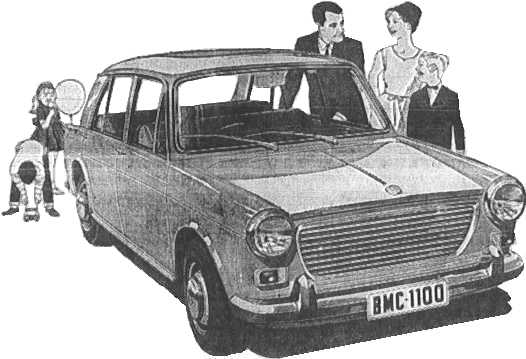
Morris 1100 continues to outsell the Mini, Cortina and Volkswagen maintaining its place at Number One in its class despite clocking up only 14,746 sales for an 8% market share, giving BMC 13% share of overall car sales.
BMC advertising campaign boasts that it is "Now Australia's most wanted family car!"
![]()
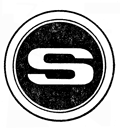
Still top of its class for the first 4 months with 4,974 sales, and local content has risen to 81%. However, the Ford Cortina edges the Morris 1100 out of the top spot by just over 700 more sales for the year.
In August the 1100 "S" is introduced with a bigger 1,275cc engine, and enjoys almost a 60% share of the 15,803 sales for the year.
Such is the popularity of the 1100 that AVIS, with a fleet of several hundred 1100s as rent-a-cars, are featuring them in their own advertising.![]()
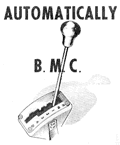
The 1100 Automatic is introduced. The 4-speed automatic gearbox adds $250 to the price of the car. With 14,575 sales (both Auto and manual) for the year the 1100 is ranked 3rd behind Cortina and Torana by a small margin.
The advertising campaign pointed out the advantages of the car for both men and women with a His/Hers style of ads:
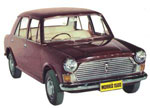 The Morris 1100 is superceeded in June, with total sales over 5½ years reaching almost 90,000.
The Morris 1100 is superceeded in June, with total sales over 5½ years reaching almost 90,000.
In its place, and unique to Australia, was the Morris 1500 OHC based on the Australian Morris 1100 with a distinctive new front grille and indicator lamps, but incorporating the cropped tail fins of the English Morris 1100 MarkII of 1968. Most importantly though, it used the all-new 1.5 litre OHC engine and cable operated gearbox from the new UK Austin Maxi, also released in 1969.
There was also a version called "Nomad" with a large hatchback door - just like on the Maxi.
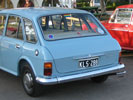 The motoring press approved of the new cars - especially the new engine - and some 5,500 found buyers. But, unfortunately, the car suffered with teething problems mainly concerning the new gearbox and cable gear linkage. Some modifications were made but it took most of the rest of the year to complete a massive gearbox exchange program.
The motoring press approved of the new cars - especially the new engine - and some 5,500 found buyers. But, unfortunately, the car suffered with teething problems mainly concerning the new gearbox and cable gear linkage. Some modifications were made but it took most of the rest of the year to complete a massive gearbox exchange program.![]()
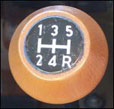 By the beginning of 1970 the gearbox issues had been mostly sorted out, but the big news was the release in September of the 5 speed gearbox - "OD/5" it was to be known as, for overdrive.
By the beginning of 1970 the gearbox issues had been mostly sorted out, but the big news was the release in September of the 5 speed gearbox - "OD/5" it was to be known as, for overdrive.
There was to be a sports version - 1500GT - but a luxury package of special features was offered instead. The "LP" provided full carpeting, wood grain dash and individual front seats to replace the standard rubber flooring, plain metal dash and single bench front seat. Sales for the year exceeded 10,000 with the Nomad proving more popular than the BMC originally expected accounting for around 25% of total sales.
![]()
 Unfortunately the initial gearbox issues ruined the reputation of the 1500 and, along with increasing competition from the Japanese and from the Holden Torana and Ford Escort, only 6,600 cars were sold before production finished up at the end of the year and the factory began to retool for the Marina.
Unfortunately the initial gearbox issues ruined the reputation of the 1500 and, along with increasing competition from the Japanese and from the Holden Torana and Ford Escort, only 6,600 cars were sold before production finished up at the end of the year and the factory began to retool for the Marina.
Leyland Australia held a huge clearance sale in November to begin shifting the stockpiled cars. ![]()
 When production ceased at the end of 1971 only about 29,000 examples had been built. Of those, about 2,100 were left to clear before the Marina went on sale in May - in fact, some 30 cars were not sold until 1973!
When production ceased at the end of 1971 only about 29,000 examples had been built. Of those, about 2,100 were left to clear before the Marina went on sale in May - in fact, some 30 cars were not sold until 1973!
The Morris Marina was essentially - but perhaps illogically - the 1500's successor in Australia and it inherited the E-series engine. "BMC Dumps FWD" screamed the newspaper headlines... But, from another perspective, the rear drive Marina looked like just the thing to battle against its conventional rear drive Torana and Escort/Cortina rivals.![]()